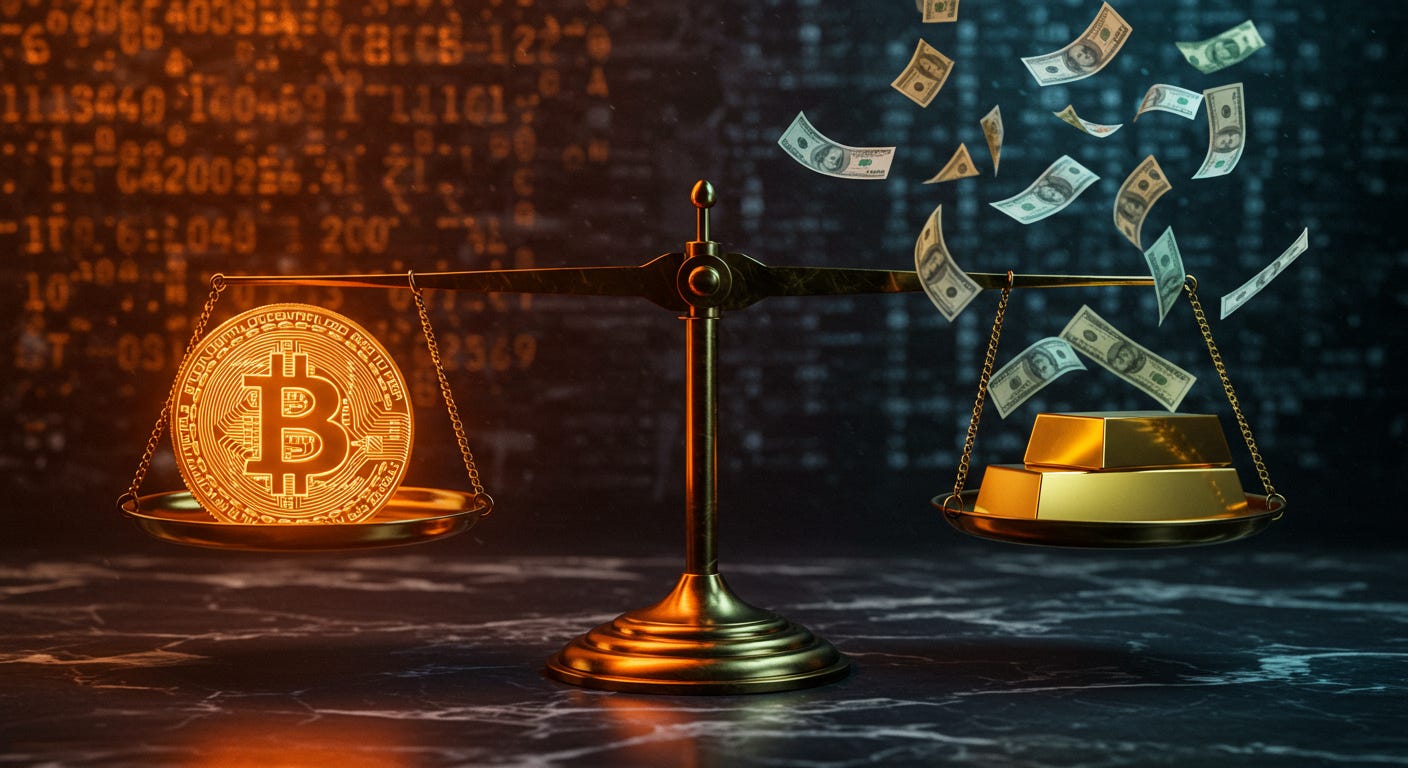Bitcoin vs. Gold vs. Fiat: Code, Rock, or Paper?
The Battle for Trust in the Future of Value
What makes money valuable? Bitcoin, Gold, and Fiat give three very different answers. Each represents a distinct way to hold value, built on unique ideas about scarcity, existence, and – crucially – trust.
Understanding this competition reveals why the future of money itself is being fought over.
1. The Nature of Scarcity: Programmed, Geological, Political



